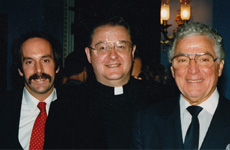Protestant and Catholic employment rates level for the first time in Northern Ireland
Posted By: January 28, 2017
Margaret Canning. Belfast Telegraph. Thursday, January 26, 2017
The statistics mark a transformation on 30 years ago when the unemployment rate was twice as high in the Catholic community.
But the new report shows that in four out of 13 industrial sectors, there were more Protestant employees, with the biggest disparity in agriculture, forestry and fishing, where 65% of employees were Protestant and 35% Catholic.
However, the present rate of youth unemployment was higher for Protestants than Catholics, at 24% compared to 18%.
Between 1990 and 2015, the proportion of the population aged 16 and over who reported as Protestant decreased by twelve percentage points from 56% to 44%, while the proportion who
reported as Catholic increased by six percentage points from 38% to 44%. Over this period, the proportion of the population reported as ‘other/non-determined’ has doubled (from 6% to 12%).
The labor force survey religion report said that between 1992 and 2015, there had been higher levels of economic activity among Protestants compared to Catholics.
But the Executive Office research said rates have now converged with the same working age economic activity rate of 72%, and the same economic activity rate of 28%, for Protestants and Catholics.
And while unemployment had also been higher among Catholics from 1992 to 2015, the rate had now converged for both to reach 6%.
In 1992, 70% of working age Protestants and 54% of working-age Catholics were in employment.
But by last year, the rates were 68% and 67% respectively.
The report said that 18% of Protestants were in professional jobs, and 19% of Catholics.
Around one-quarter of males in both communities (27% of Protestants and 24% of Catholics) were employed in skilled trade occupations.
Economist Dr. Esmond Birnie of the Northern Ireland economic policy center said the jobs gap between the communities had now “closed completely.”
“Back in 1992, the unemployment rates for the ‘two communities’ were 18% and 9% respectively, a ratio of two-to-one.
Protestant and Catholic employment rates level for the first time in Northern Ireland
Margaret Canning. Belfast Telegraph. Thursday, January 26, 2017
The statistics mark a transformation on 30 years ago when the unemployment rate was twice as high in the Catholic community.
But the new report shows that in four out of 13 industrial sectors, there were more Protestant employees, with the biggest disparity in agriculture, forestry and fishing, where 65% of employees were Protestant and 35% Catholic.
However, the present rate of youth unemployment was higher for Protestants than Catholics, at 24% compared to 18%.
Between 1990 and 2015, the proportion of the population aged 16 and over who reported as Protestant decreased by twelve percentage points from 56% to 44%, while the proportion who
reported as Catholic increased by six percentage points from 38% to 44%. Over this period, the proportion of the population reported as ‘other/non-determined’ has doubled (from 6% to 12%).
The labor force survey religion report said that between 1992 and 2015, there had been higher levels of economic activity among Protestants compared to Catholics.
But the Executive Office research said rates have now converged with the same working age economic activity rate of 72%, and the same economic activity rate of 28%, for Protestants and Catholics.
And while unemployment had also been higher among Catholics from 1992 to 2015, the rate had now converged for both to reach 6%.
In 1992, 70% of working age Protestants and 54% of working-age Catholics were in employment.
But by last year, the rates were 68% and 67% respectively.
The report said that 18% of Protestants were in professional jobs, and 19% of Catholics.
Around one-quarter of males in both communities (27% of Protestants and 24% of Catholics) were employed in skilled trade occupations.
Economist Dr. Esmond Birnie of the Northern Ireland economic policy center said the jobs gap between the communities had now “closed completely.”
“Back in 1992, the unemployment rates for the ‘two communities’ were 18% and 9% respectively, a ratio of two-to-one.
“In 2015, the year of the data in this report, the two rates were equal to 6%.”
But he said there were still some differences in 2015, with the unemployment rate higher for 16 to 24-year-olds in the Protestant community.
The research also showed that Protestants were more likely to be owner-occupiers, at 68% compared to 65%.
Dr Birnie added: “The disappearance of the unemployment difference by itself does not definitively prove that religious discrimination existed in the past and has now been eliminated.
“The data is based on a survey so there are margins of error. It is also notable how a growing proportion of people are self-defining as belonging to neither of the two communities.”
In 1992, 6% of the population described their religion as ‘other/non-determined’ though that percentage had reached 12% by 2015.
“In 2015, the year of the data in this report, the two rates were equal to 6%.”
But he said there were still some differences in 2015, with the unemployment rate higher for 16 to 24-year-olds in the Protestant community.
The research also showed that Protestants were more likely to be owner-occupiers, at 68% compared to 65%.
Dr Birnie added: “The disappearance of the unemployment difference by itself does not definitively prove that religious discrimination existed in the past and has now been eliminated.
“The data is based on a survey so there are margins of error. It is also notable how a growing proportion of people are self-defining as belonging to neither of the two communities.”
In 1992, 6% of the population described their religion as ‘other/non-determined’ though that percentage had reached 12% by 2015.










